In the morning, we stretched in front of our window and admired the rooftops of Dublin. Many roofs have grass, as an eco-friendly element.
Leaving the hotel, we were surprised to see Fruit Sellers and Fruit Markets operating in the vicinity. They operate from early-morning until 12pm.
As I mentioned earlier, a distillery occupied that area in Dublin, during the 1700s. Lewis and I learned that in 1846, it was converted into a marketplace for fruits and vegetables. Since then, that part of Dublin remains associated with those markets. Such continuity of history is amazing! Those sites remain as vivid memories of Dublin's amazing cleanliness and ongoing traditions.
Enamored with the recipe of a Full Irish Breakfast, Lewis had the notion to try a different version at a well-known riverside cafe named Panem Cafe. It is located on Lower Ormond Quay, facing the river. Since Dublin is a walkable city, we arrived by foot.
Despite the early hour on a Saturday, the place was fully occupied with jolly customers. Tables and chairs on the sidewalk overlooked the water and allowed for "people watching" on the quay and in vehicles on the road. Please enjoy this brief video showing the cafe's proximity to the river...
Luckily, we snagged a table just as its previous occupants departed. We admired that the furniture was designed with talented woodwork.
A young Irishman set our table and presented menus. The luster of the utensils made them seem new, and the sleek water pitcher was fashioned from stainless steel. (It was classier than the standard ones used in the USA that are made of scuffed plastic). In fact, in every eatery that we visited in Ireland, the water pitchers were either made of glass or shiny metal... never plastic. They have a clearer awareness of how "reusable" plastics are actually harmful for ingestion because they are made from petroleum.
Unlike most sugar-craving Americans (who gobble over-sweetened cereal or microwavable frozen Pop-Tarts with fructose syrup fillings and icing), Lewis and I prefer savory recipes in the morning. Our Asian waitress spoke with an Irish accent and wore a tank-top for the warm weather. Her smile beamed as we ordered identical things, but I supplemented mine with an espresso. The barista was a tall Korean fellow who ground/tamped/pulled a perfect one for me.
Sunshine flooded through the broad windows, and the great use of wood furniture lent a homey ambiance.
Both of our breakfasts included two poached eggs, smoked ham, a dollop of hummus, sautéed mushrooms & onions, grilled sausage, and thick-cut slices of ciabatta bread.
Any chef will inform you that a yolk indicates the chicken’s diet. Healthy hens that eat natural foods (plants and insects) produce orange-colored yolks. But the ones that are fed a diet of “processed GMO food-products”, growth hormones, pharmaceutical antibodies (due to overcrowding), or cheaply-made “fillers and food subsidies” will produce yellow yolks. Subsequentially, Lewis and I savored the ochre-colored yolks in our eggs!
Using Irish lingo, the word “grand” indicates “fine”. e.g.: the weather is grand; “I’m grand”. If a waitress asks you for something but you’re satisfied, you say “I’m grand”. When experiencing Irish hospitality, the ritual is to be offered something but say “I’m grand” (to politely decline), but the offer will be repeated, and then you accept it.
The total cost was €33.25, and we gave a €3 gratuity, which was above-average. Being back in Europe, we acclimated to the convenience of leaving our dirty dishes on the tables. In Ireland, employees at coffeeshops, teahouses, and cafes clean the dishes for you. In America, you pay gratuities to employees, but you still clean away your dirty dishes. The Irish philosophy is that you are the guest who should savor your moment; they clean after you. We like their beliefs.
Fueled from our amazing meal, we crossed the Millennium Bridge into the south half of the city.
Since it was Saturday, we made an effort to see the Saturday Greenmarket, situated in Meeting House Square. In the 1690s, the square belonged to a Presbyterian church. Walking on Eustace Street (named for Sir Maurice Eustace of 1590 who was the Lord Chancellor of Ireland), we gushed with admiration at the cobblestone streets. Handsome!
Lewis radiated enthusiasm about a 50%-off Sale at a Sex Toy Shop operated by Basic Instincts.
Their storefront window burgeoned with jock-straps, tantalizing underwear, dildos, butt plugs, vibrators, handcuffs, and Carnival masks.
We were impressed that Irish culture doesn't make sex into a taboo subject (as usually happens in the USA, due to Puritan values, despite being a "Land of the Free"). As in other parts of the world that explored, Dublin allows sex-themed merchandise to exist alongside grocery stores, attorney offices, and spiritual centers.
We used a passageway under a building to get to the greenmarket. There were several purveyors of small-batch cheese, sausages, olives, vegetables, and bread. A few Food Trucks provided Thai or Irish snacks.
Around the corner on Dame Street, we entered a Souvenir Store named Carrolls Irish Gifts.
Once again, sex-themed boxer-briefs were juxtaposed with Christmas ornaments, woolen hats, and coffee mugs. (Since sex isn't taboo, they were not confined to a restricted corner of the store).
We didn't like the touristy merchandise in all of the Souvenir Stores that we visited, so we remained content with our mill-woven scarves from the Museum Gift Shop.
Further on Dame Street, we admired the City Hall. The street was not named for the female version of a knight; it was named for a dam that existed on a river (now flowing under the streets) in the 1610s. Built in 1769, the City Hall was originally the Royal Stock Exchange for merchants.
For comparison, the City Hall of NYC prevents citizens from getting within 100 feet of it. The building is cordoned off from the public by dozens of armed guards, tall fences, and anti-siege barricades for vehicles.
Dublin's is accessible. Apparently, if your civic government doesn't squander/embezzle revenue and mistreat you, it doesn't need to be afraid of you. That is the hallmark of a stable society.
In 1229, King Henry III decreed a royal charter allowing Dubliners to elect their own mayor. The title evolved into Lord Mayor in 1641. Progressively ahead of most American cities, Dublin's mayor is a woman named Caroline Conroy. In fact, since Ireland won independence, its capital has enjoyed nine women as the Lord Mayor! Remarkably also more progressive with equal-opportunity than American cities, its Lord Mayor in 2020 was a woman with Chinese heritage named Hazel Chu. Seen below, the current 354th Lord Mayor is well-liked. As part of her official regalia, she wears a Chain of Office, which is emblematic of fealty, since medieval times. Dublin's is a national treasure because it dates from 1698, when King William III presented it to the capital.
According to the Dublin City Council's webpage, the Lord Mayor's Coach (assembled in 1791 and restored in 1975) is stored there. Every year, the Lord Mayor of Dublin uses it to lead the St Patrick's Parade, and it also carries the lord mayor to the annual Dublin Horse Show.
City Hall stood in front of Dublin Castle, which is majestic! We were eager to get a tour of the compound.
While most American's revert inwards to stay within America and spend ten-times the amount to visit fake castles in Disney amusement parks...
... Lewis and I were enthralled to go overseas and explore a real one with a millennium of heritage and history.
We crossed a footbridge where a moat existed in olden days; Dublin Castle started as a "motte-and-bailey" fort.
The bronze window frames matched Lewis' shoes! Ha ha.
At the Admissions Desk, a pleasant woman informed us that we just missed the most-recent Guided Tour, and the next one was fully-booked. As a local person with insight, she advised us to return after lunchtime, when the castle was less hectic. Winking at her, we gave gratitude for her help.
Heading west, we went to Christ Church Cathedral to admire its fanciful stonework.
As the national cathedral, St Patrick's is the gem of the liturgical properties in Ireland. It was founded by Roman Catholics in 1191 as a wooden structure on the site of an ancient well that was supposedly used by Saint Patrick. Lewis posed by the gurgling fountain, amidst the serenity of St Patrick's Park.
Full of pastoral beauty, the park has lawns, formal flowerbeds, and greenery. (All of Manhattan's churches started that way, too, but greedy overdevelopment consumed their land). The green-space provides a tranquil place to pause and refresh before entering that House of Worship. Please enjoy my panoramic video of the prettiness...
The current building's Gothic shape and dimensions are from 1220. During modern construction, the remnants of a well from that era were uncovered, and that substantiates the tale of Saint Patrick. It is the largest Catholic cathedral in Ireland.
We are familiar with the St. Patrick's Cathedral in Manhattan, which was named after Dublin's and is America's largest Catholic church. However, the one in Dublin retains its sanctity because Dublin refuses to allow smelly food-carts to overcrowd the property. Greedily, NYC infests its landmarks with ice cream trucks, greasy food carts, and sloppy vendors selling artificial handbags. As seen below, it cheapens NYC's scenery, but NYC doesn't care.
Reverently removing our hats, we entered the cathedral as its huge bells tolled and told the time. It was glorious to hear those bells chiming! In America, most church bells and historic municipal bell-towers are silenced via Noise Ordinance laws because ignorant Americans perceive them as a nuisance.
St Patrick's has a group of Bellringers, and those volunteers yank the cords that make the bells ring for religious occasions. They create music together, and it's marvelous.
Two tickets for a guided tour cost a total of €15.00. Our tour guide was an Arab fellow who was enamored with Ireland and its iconic cathedral. Here are our photos of the interior...
Our tour began at early-Christian grave slabs that were older than the cathedral.
Memorial statues stood over them.
A tall memorial from 1581 honored the influential Jones family, related to the ancient Viscounts of Ranelagh.
Most of the floor is adorned with ceramic tiles that feature ancient Celtic knots. Beautiful!
All Celtic clans were polytheistic, so they revered gods and goddesses for different aspects of life. When Christendom overtook the clans, their deities were replaced with saints and angels... because while Christianity claims to believe in one god, its recruitment tactic was to rename the deities of conquered regions as celestial characters. Now, Christians pray to those deities (saints & angels) for different things, as seen below.
As a melding of styles, Celtic crosses are distinguishable by their interlocking shapes of symmetry.
We studied the remains of a Renaissance-era door that is preserved because of its "handshake window".
In 1492 (while Christopher Columbus was sailing to North America), a feud began between the Fitzgerald Family of Kildare and the aristocratic Butler Family of Ormonde. The Butlers sought refuge in the cathedral as a sanctuary. To end the fight, Gerald Fitzgerald offered to shake hands through a hole that he made in the door--trusting that it wouldn't be cut off. Peace was accepted by the Butlers. In Irish jargon, the phrase "to chance your arm" comes from that incident.
Lewis and marveled at the intricate hand-carved pews. Previously used by monarchs, the front pew has two gilded chairs for Ireland's president and spouse.
The choir sits in the quire, which is accessible to the congregation.
Overhead, banners signify the former Knights of Saint Patrick: a chivalric order of knighthood established by Britain's King George III in 1783.
After Ireland won independence, most of that regalia was put in Dublin Castle.
We spent the most time in the Lady Chapel, which is a space in many Catholic churches dedicated to the Blessed Virgin Mary. This one was built in 1270 by Archbishop Fulk de Saunford.
Please enjoy my panoramic video of the brightly-illuminated space...
As you saw, Lewis lit a candle in the Chapel to Saint Stephen, who was the first Christian martyr.
*In Ireland, the Feast of Saint Stephen's Day is celebrated by "Wrenboys" wearing straw costumes and masks. It reminds us of ancient polytheistic rituals that endure in Europe to celebrate the winter solstice and start of springtime. It looks like this...
*To see similar festivities, please use this link:
https://halfwindsorfullthrottle.blogspot.com/2021/12/the-many-outfits-of-saint-nick.html
We sat in great stone chairs with prayerful poses.
Modern ones are fashioned of wood, and hand-embroidered kneeling cushions dangle from each one.
The area is used for choir rehearsals, and we heard the echoing voices of choristers singing from somewhere nearby. It was a lovely gentle melody. Consisting of 24 boys and 8 men, the Cathedral Choir sings Choral Evensong Sunday through Friday. All choristers attend the Cathedral Choir School, which is the oldest school in Ireland: established in 1432.
We enjoy the sound of boys choirs, and we love hearing the Choir of Men & Boys at Saint Thomas Fifth Avenue in Manhattan. *To see it, please use this link:
https://halfwindsorfullthrottle.blogspot.com/2014/12/lessons-carols-at-st-thomas-church.html
Our tour guide indicated a mobile pulpit (on wheels) used by Jonathan Swift when he was the Dean of the Cathedral, from 1713 to 1745.
He is famous for authoring the fantasy tale Gulliver's Travels. The best-known part of the adventurous tale involves a man who somehow arrives in a land of tiny people called Lilliputians. It mocks their arrogance, entitlement, and assumption that they control the universe. It was aimed at pompous monarchs and bombastic governments of Swift's era.
Despite liberally chiding society's norms, Swift spent half of his life as a conservative preacher. When giving his notoriously long sermons, if he saw someone fall asleep, he urged his minions to wheel his pulpit to them, so he could yell at them. He is buried under the floor.
We also learned about Ireland's second Patron Saint. February 2 was Saint Brigid’s Day. She was born in the 450s in Kildare and used her faith and compassion to spread Christianity over the influence of her father, who was a polthyestic cheiftan. She was consecrated as a bishop, and she worked with Saint Patrick to influence how Catholicism was established on the island. She died in 525 AD. She is depicted in stained glass windows at St Patrick’s Cathedral.
Our tour ended, and we were encouraged to explore the cathedral on our own. We invested 20 minutes of glorious admiration.
*To see when we visited their former home in London, please use this link: https://halfwindsorfullthrottle.blogspot.com/2021/10/our-trip-to-london-uk-part-6-heritage.html
At the back of the nave, we perused items at the Gift Shop. Lewis selected a small circle of hand-crafted stained glass to hang against one of our windows at home. (We might also use it as a Christmas ornament).
Making that type of glass is a talent in existence for more than one thousand years. Ours depicts a scene from an actual window in the cathedral, and Lewis was careful to pick the one featuring Saint Patrick conferring his blessing on Irish kings. It was created by Liffey Artefacts. The scene is one of 39 that are shown in the large Saint Patrick's Window at the west end of the cathedral. They begin with his kidnapping from Wales and conclude with his burial in Ireland. In an era when the people were kept illiterate (and churchly words were only spoken in the ancient language of Latin that commoners didn't understand), those windows were important to keep parishioners interested.
As we paid the cashier, a cavalcade of college students prattled in. We were glad that we were leaving, and we were grateful for the serene sanctity that the cathedral had while we visited.
Since it was the week of Valentine's Day, we decided to visit the Whitefriar Church, where some of the remains of (Saint) Valentine are entombed. Erected in 1825, it is located on Whitefriar Street on the site of a priory from 1539. It is operated by Roman Catholic friars who belong to the Carmelite Order.
Wearing brown cassocks, the friars (monks) performed various tasks inside the church. We viewed the mosaics and frescoes, but the alcove for Bishop Valentine drew the largest crowd. A pile of red flowers and Valentines Cards were there.
During the decline of the ancient Roman Empire, Valentine championed for Christianity.
Famously, the imprisoned man wrote inspirational letters to female friends and signed them "Your Valentine". He thrilled his captor by "performing miracles" on that man's daughter, so he was released. But his continual Christianizing got him in trouble again. Valentine's sainthood is questionable, but his signature is a historical fact that morphed into the secular ritual of exchanging Valentine's Day cards.
*For last year's Valentine's Day, we flew to Milan to explore the roof of its cathedral and indulge in Italian chocolates and confectionary. To see that trip, please use this link:
https://halfwindsorfullthrottle.blogspot.com/2022/03/our-trip-to-italy-part-1-of-7-milan.html
It was 12:30pm, so we retraced our steps and arrived at Dublin Castle. Seen below, Lewis posed by the tall Records Tower, which was erected in 1228. It's the oldest tower and the only one to survive from the original fortifications.
We were fortunate to get the last tickets to the next Guided Tour, which was about to begin! The same saleswoman sold us our tickets and laughed happily that we succeeded.
Two tickets for Dublin Castle and its State Room, the adjoining Royal Chapel, the walled garden, and the nearby Chester Beaty Museum of Asian Art cost €24. That was a tremendous value. We were told to wait in the courtyard for the tour guide. Judging by the size of the crowd, touring the castle is popular activity.
The site has Viking origins. Those Norsemen settled in Normandy, France (given to them by the French king so they’d stop invading). They were the Normans led by William the Conqueror in 1066 who conquered England. After that, they continued to Ireland. Just as they did in Wales, their wooden forts were upgraded to stone bastions. Seen below is a depiction of the earliest version of the castle.
If you like the glorious conservation of handcrafted masterpieces, you can thank the Royal Society of Antiquaries of Ireland. Founded in 1849, it includes a nation-wide membership that protects Irish arts, manners, and history. It is headquartered in Dublin at Merrion Square.
Next, we segued to the posh part: the historic residence for the Viceroy of Ireland (Lord Lieutenant), who governed on behalf of the monarch in England. After the Middle Ages, the wooden structures inside the castle were replaced with masonry, and the Parliament House (damaged by fire in 1673) evolved into the Viceroy's home. Another fire in 1684 caused a rebuilding that added Georgian-style structures. In addition to plush State Rooms, the building contained headquarters for British Intelligence Services and offices for certain Courts of Law.
As we ogled the several State Rooms, our attention was given to new brass discs near the 151 paintings, which identified them. Curators hired an artist to hand-paint numeric calligraphy on them that was created in Dublin in 1843. The Irish support their rich heritage and inventively find ways to keep it alive and relevant.
Our tour ended, and we were invited to explore more on our own. Inadvertently, Lewis and I wandered into a corridor that seemed to be used by staff. An elderly guard sat at a desk and inquired if we needed directions? We asked how to get to the Chester Beaty Museum? After trying to give convoluted instructions, he chuckled and said, "Perhaps I'll simply escort you." We noticed that he walked with a cane, so we politely didn't want to inconvenience him. Yet, he smiled grandly and insisted; his hospitality was admirable. With a sneaky sideways glance, he whispered, "I'm not supposed to leave my post, but if we hurry, I can get back before anyone notices." With conspiratorial smiles, we agreed to be as quick as possible... which was comical because of his slow speed.
He surprised us by saying, "I'll show you a secret way to get there." It's always amazing to be shown a secret passage when you're in a castle! Using his security badge, he unlocked a door, hobbled through a narrow corridor, and swiped his badge again to unlatch an outer door. Peering out, we realized that we were inside the Blue Tower.
Steps led down from the tower to a footbridge that spanned the street to a rampart over the walled garden. With an amused wink, the castle guard urged us to go to the museum via the garden. We thanked him profusely; it was a treat to use a "secret passage" that most visitors don't see. The guard wished us a lovely day, and he locked the tower behind us.
Crossing the bridge put us inside the walled garden. It also gave us a chance to admire the brightly-painted segments of the rear of the castle.
As we descended from the rampart, Lewis paused to admire a Silk-Tassel Bush (hanging flowers) named Gary Elliptica. They were so soft!
Within the walled garden, we paused to smile at springtime flowers emerging from the soil.
By the time we left, we were hungry. Before our trip, we watched an episode of Curious Traveller which occurred in Dublin and highlighted a pastry shop named Queen of Tarts. Intrigued, we visited their website and confirmed their operating hours on Google. According to online sources, it is one of Dublin's best-known patisseries since 1998, and it possesses a prized address near a famous street named Fishamble Street, which was built by the Vikings! However, we arrived at their shop to realize that they were closed for renovation... despite the information of their own webpage and Google! We dislike it when small-businesses neglect their online presence and forsake their potential customers.
Meandering in a northerly direction, we crossed the river. It always looks picturesque.
Eventually, we saw a Chinese teahouse named The Vintage Teapot. It's located on Cathedral Street, which coincidentally continued our churchly-themed day.
The spacious eatery had a nice variety of loose-leaf tea, and their food consisted of cakes and dumplings (sweet and savory). Lewis selected a pot of chrysanthemum tea, and I got a green tea that could've used more flavor. Since it was only 2pm, we were surprised that they were out-of-stock of half of their food. Didn't they anticipate customers in the afternoon (since they're open until 6:30)? We compromised our hunger for two platters of dumplings. Alas, they were mediocre. Making it worse, all of the paper towels were gone from the lavatories (out-of-stock on that, too), and the young female servers seemed inadequately trained. Our bill totaled €27. We don't recommend that place.
We returned to the hotel to freshen up. As evening began in Dublin, it was ten-degrees warmer than the cold temperature in Manhattan (even though it was 12pm midday there!).
Perhaps their thighs and calves are toned from athleticism: football (only America calls it soccer), rugby, and hurling.
More than we see in America, Irishmen wear skintight pants. We didn't complain. They looked like this...
*Incidentally, football originated from China's Han Dynasty in 2 BCE. It was named cuju and was furthered by athletes of the Tang Dynasty. To see when Lewis and I visited China, please use this link:
https://halfwindsorfullthrottle.blogspot.com/2014/11/our-trip-to-china-part-i.html
We ventured out to find food. As we walked, we began noticing that many companies in Ireland invest in using vans and trucks made by Mercedes-Benz: safe, reliable, and superior quality. That's indicative of a flourishing and smart culture.
Crossing the river to the City-Center, we entered Fallon & Byrne Food Hall on Exchequer Street. The gourmet store reminded us of the (now-defunct) Dean & Deluca in Manhattan... or the EATALY franchise. It was needlessly overpriced, so we bypassed it. (We saw better value for gourmet delicacies at Harrods of London, KaDeWe in Berlin, and the 400-year-old Nishiki Market in Kyoto).
Next, we entered an enclosed "retail passage" named George's Street Arcade, which went through several buildings.
We exited at the intersection of Drury Street and Castle Market. Proceeding east, we explored William Street South. It was paved by William Williams in 1676, and it retains the city's largest cluster of historic merchant houses.
During our time in Dublin, we loved using alleys. They were safe, clean, and convenient.
Many European cities retained their alleys to enable deliveries and maintenance personnel to have access to buildings without obstructing pedestrians. Irrationally, NYC greedily overdeveloped and eliminated them, so everything overcrowds the sidewalks: parcel deliveries, catering carts, demolition, and redecorating. For pedestrians and people going to work, it’s like navigating through an obstacle course! That’s what you overpay to experience in America’s richest city. It looks like this: chaos and inconvenience because of greed...
That was rarely seen in Dublin.
We turned onto King Street South. Towering overhead was a glass-paneled structure named Stephen's Green Shopping Centre. Built in 1966, it has a Victorian-era style.
We browsed several shops. A bright-eyed blonde shopgirl recognized our accents and asked what part of "The States" we were from. She was gobsmacked that we were New Yorkers: she loves New York. (We don't know why). She hasn't been there yet, but she visited Texas and loved that. She envisions herself living in Texas. *To see my visit to Texas, please use this link:
https://halfwindsorfullthrottle.blogspot.com/2017/06/my-quick-trip-to-dallas-texas.html
She asked if we liked Dublin, and we definitely did! When we described our cycling escapade in the park, she grinned and said, "That's wonderful. Ireland is showing you everything, and that is a true welcome. If you're okay with it, you'll be grand."
We traipsed north on a splendid pedestrian-only street named Grafton Street. It is named for Charles FitzRoy, the 2nd Duke of Grafton who was the illegitimate son of King Charles II. He owned the land. (Perhaps that is why it intersects with Duke Street). Two years ago, Lewis and I explored London and visited the barony that his ancestors still own. In the 1870s, Grafton Street contained Dublin’s Red-Light District with 1,500+ prostitutes. (Prostitution is legal in Ireland, but conservative laws constrict the “buying of sex”). Now, it is filled with spiffy retailers and flower vendors.
We marveled at the beauty in Dublin's retail districts because Manhattan's are defaced by its greedy allowance of slovenly food carts that excrete smoke, grease drippings, and stench in every district—rich and poor alike. Paying extra for upscale areas does not let you escape them. They are unsanitary, but the overpaid authorities ignore that. Adding more déclassé clutter to the overpriced streets, illegal hawkers try to sell fake "knock-off" handbags. The whole scene is like a third-world nation.
None of that in Dublin! :-)
Walking along, we heard several street performers, called buskers. They are commonplace in Dublin to accentuate the city's love of live music. Every time we used that street, we witnessed lively musicians. A talented teenager blew into bag pipes. A trio of Asian guys performed American R&B music. An older fellow strummed a guitar. A duo performed tap-dancing and fiddling. A woman played a harp with dexterity. A quintet of youngsters played string instruments. Around every corner, music floated on the breeze.
Adding to the beauty, several flower stands punctuated the pavement--full of colorful blooms and sweet scents.
Having streets that are only for pedestrians certainly helps Dublin's retail district. It was lively and full of shoppers. Most of the stores did a brisk business.
Meanwhile, there are 21 retail vacancies on NYC’s prominent (overpriced) Madison Avenue, between 51st Street and 59th Street. During the past 12 months, some vacant storefronts were occupied, but others left simultaneously. Instead of making the once-upscale area safer or beautiful, landlord merely raise the price of rent. They continually expect people to overpay for the “privilege” of having an address in that area: full of crumbling pavement yet never-ending road construction, an unstopped spree of shoplifting (existing for a third year). In Dublin, retailers seemed unconcerned about shoplifters who might "grab and run". Maybe they're confident in their police and "street cameras" (that actually function). That's the opposite of NYC, where thieves brazenly steal from stores without penalties. Please watch this video...
The gluttonous NYPD has plenty of excuses for their failures, despite demanding the largest police budget in the world. Last year, the elite boutique where Lewis works in (pricey) SoHo was plagued by 12 robbers! They were never caught by NYC's overpaid-yet-uncaring police, who merely respond to crimes but never solve them. Instead of that lawless mayhem, we prefer Ireland's successes.
*Please use this link to understand what we deal with in NYC:
https://halfwindsorfullthrottle.blogspot.com/2021/03/ineffective-authorities.html
On the corner of Duke Street, we popped into the city's second Marks & Spencer grocery store. The upper level contains a skylit cafe and a takeaway section.
The lowest level contains a wondrous supermarket. We bought food intended for our breakfast on a train, on Monday. Notice the fair prices... and remember that this is a capital city!
*Please use this link to see the food products that are abundant in the USA:
https://halfwindsorfullthrottle.blogspot.com/2018/12/your-health-well-being-are-unimportant.html
Lacking greed, they sell healthy options affordably… for the betterment of society. That is smarter than America. Ireland's government provides Universal Healthcare (unlike America's profit-driven medical industry and health insurance schemes), so there is motivation to ensure that the nation is full of fair-priced nutritious food. We like those values!
Most noteworthy was the continual affordability of eggs.
Back at home, egg prices are out of control. Only in a money-grubbing nation like the USA will greedy/cheap industrialists perpetually "cut corners" (without federal supervision) that harms the health of citizens. Without learning from the global pandemics--or exposés about "factory-made eggs"--American conglomerates permitted unsafe conditions to cause another flu illness among its poultry. 50.54 million infected birds were killed. Also, those conglomerates refuse to pay fair wages, so they claim to be victims of "labor shortages". Unwilling to offset the costs of their own disasters, they perpetually pass it onto their customers.
The most despicable aspect is that the situation seems grossly exaggerated so that America's corporate egg producers could "squeeze" consumers for extra profits.
We prefer the Irish methods that prevent sickness and keep food prices affordable. (America will never learn). *Please use this link to learn why American chickens were already banned by the UK, 6 years ago...
https://halfwindsorfullthrottle.blogspot.com/2017/08/us-chickens-washed-with-chlorine.html
Lastly, we eyed a peculiar-sounding soup named Cock-a-Leekie. It's fun to say! It includes peppered chicken, leeks, and barley.
Toting our bags (we brought our own to avoid using disposable ones), we decided to find a Spanish restaurant that we noticed earlier.
Located at 1 Saint Andrews Street, the orange-painted restaurant is named Salamanca Tapas. It focuses on authentic recipes from Spain. The blonde Irish hostess sat us at a booth with a view of the flickering fireplace.
That day, we walked 6.5 miles! We were ready for a feast! Lewis drank sangria, and we shared two versions of Gamba Shrimps: garlic chili with brandy, and garlic white wine. We devoured their seafood paella, and it evoked memories of our time in Barcelona! The seafood was bountiful and sizable. We were enticed to order a platter of grilled octopus, and it was a generous portion. We also had a side-order of sautéed mushrooms. Everything was delicious. Our meal cost €69.20.
Greatly unlike NYC (and many urban parts of America), there was no rush from the restaurant to eat our food. Life in the Irish capital is balanced for enjoyment. That is pleasant. The servers encouraged Lewis and I to take our time and enjoy ourselves.
Walking back to our hotel, we noticed two sex shops, which you wouldn't see in posh areas in America. We noticed that one of them offered a "student discount".
On Mary Little Street, we noticed a corner-shop that lacked a sign but was full of people. We peeked through the windows and the saw participants in a pottery-spinning class. So cool!
Arriving at the hotel, I suggested that we buy two glasses of wine from the Lobby Bar to bring up to our room. A handsome young man with an Eastern European accent was quick to serve us. His name was Tomi.
We inquired about white wines, and he impressed us by reaching into the sleek wine refrigerator and putting all of the bottles on the counter, so we could see them as he described each. Such service! Lewis chose a Sauvignon Blanc by Kapuka, and I opted for a Gavi made by Fontanafredda. The young man filled our glasses (the industry term is "a generous pour") and the cost was only €6 each. That's fantastic for a hotel bar... in a capital city. Those are the values of Ireland. (At home, mediocre hotels in NYC charge at least $18 per glass, and the portion is only half-full. Hotels and bars are also notorious for filling bottles with inferior wine, despite having pricey labels).
Back in our room, we "enjoyed ourselves".
Join us in the next part for a classy excursion by using this link:
https://halfwindsorfullthrottle.blogspot.com/2023/02/our-trip-to-dublin-ireland-part-3-of-6.html











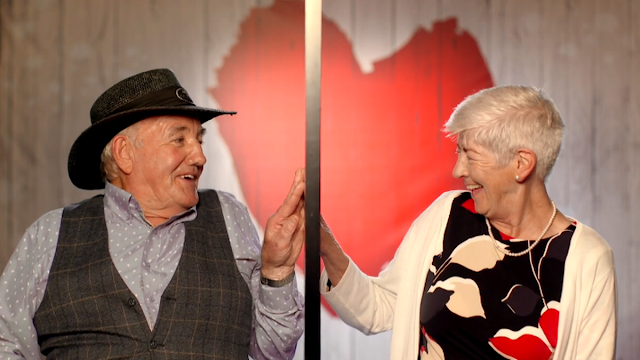




















































































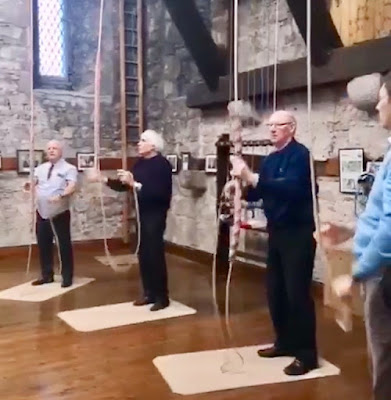


















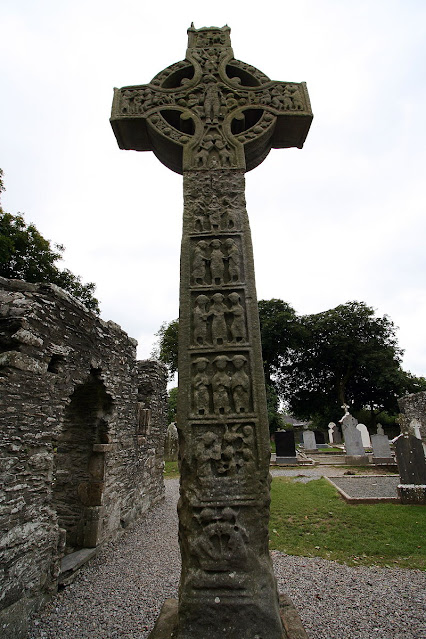























































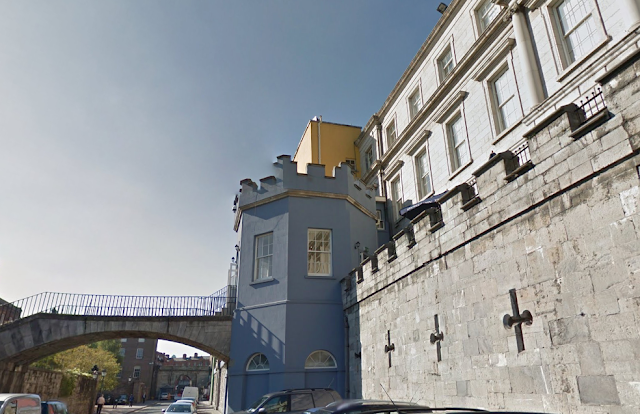







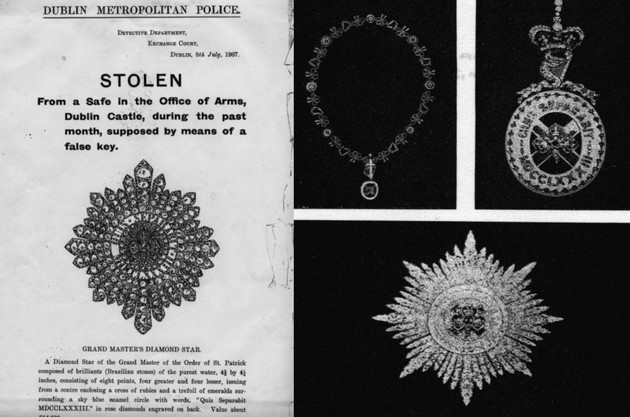




























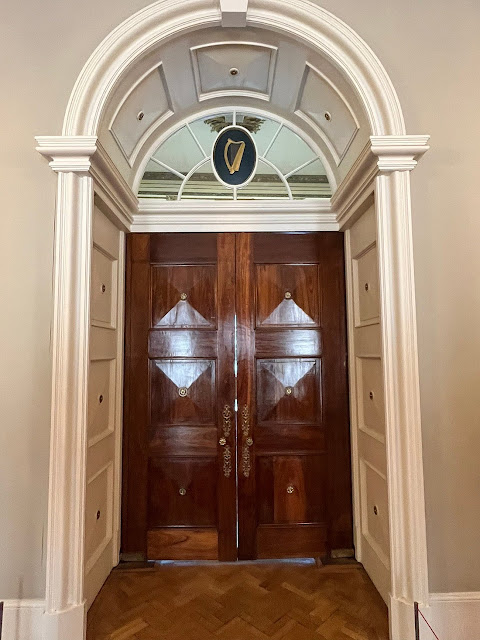












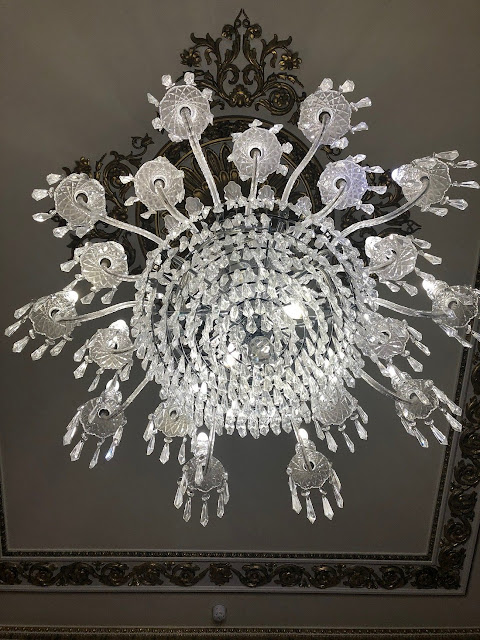











_Dublin_Castle_Interior_(Throne).jpg)






























.jpg)
.jpg)

.jpg)











.jpg)

_(CBL_Thi_1302).jpg)
.jpg)
.jpg)
_(CBL_J_2693).jpg)
_(CBL_J_1038.1).jpg)
.jpg)











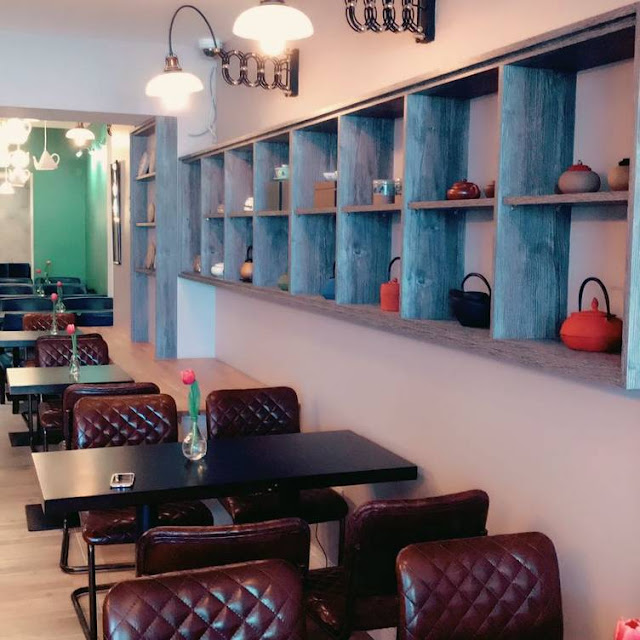













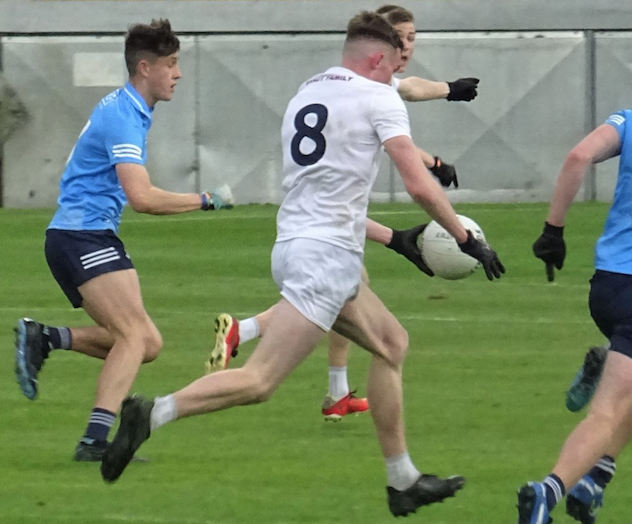


































.JPG)






























































































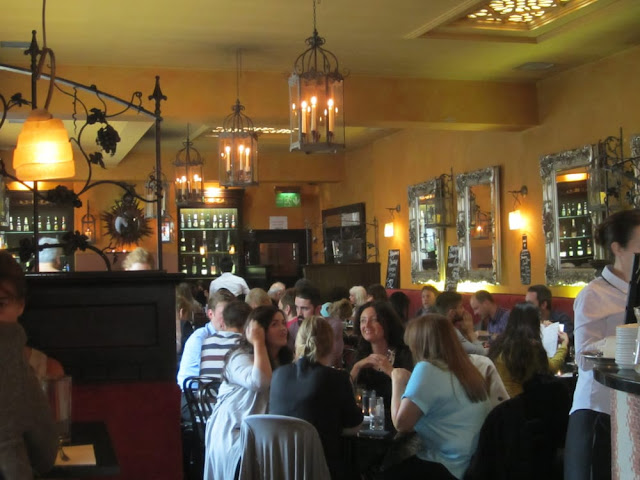















No comments:
Post a Comment
Don't be shy: leave your comments :)